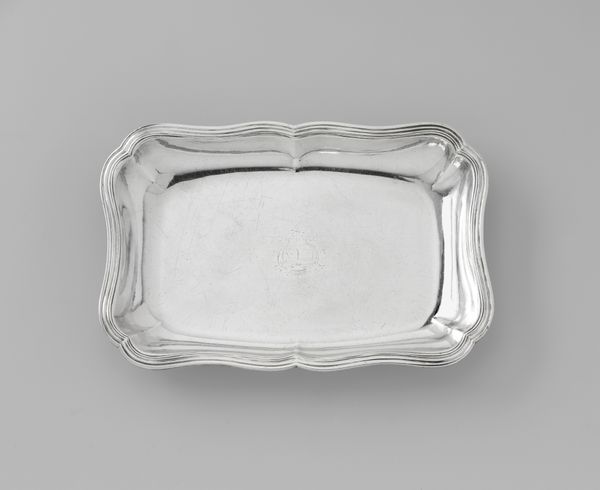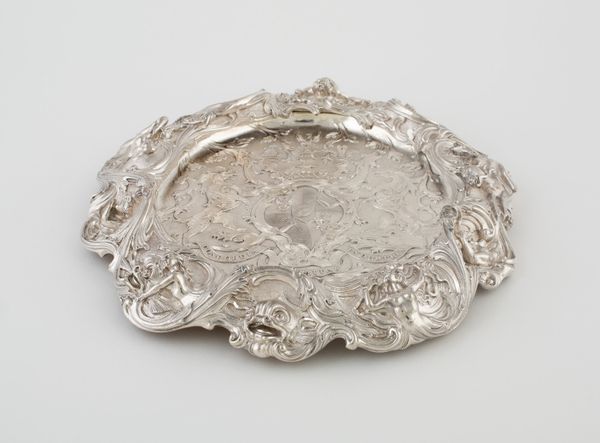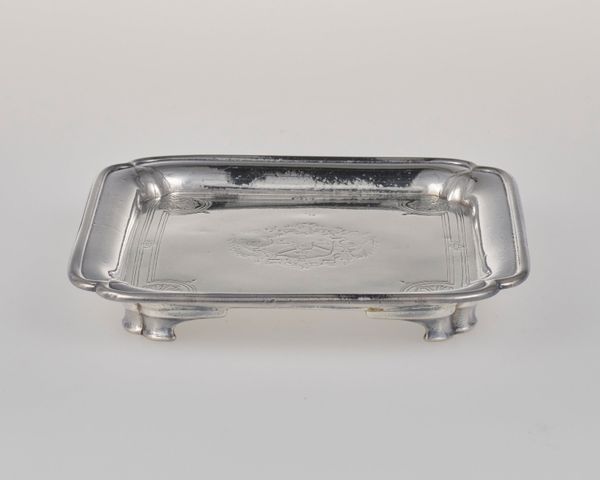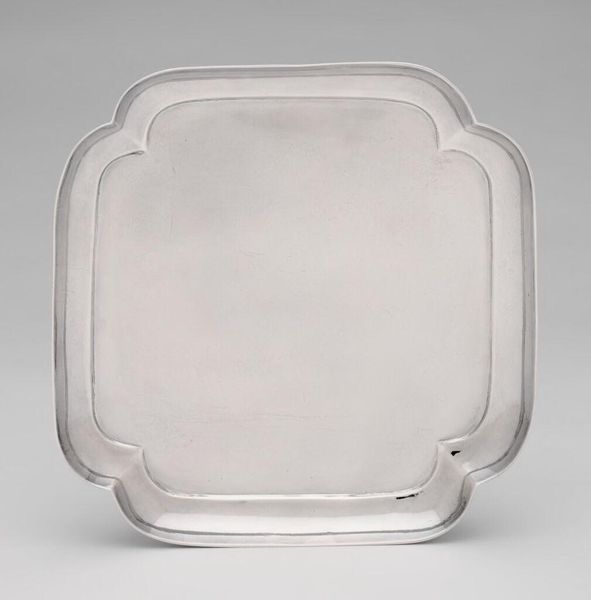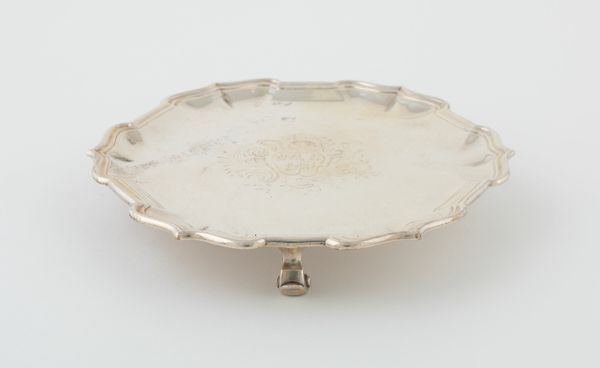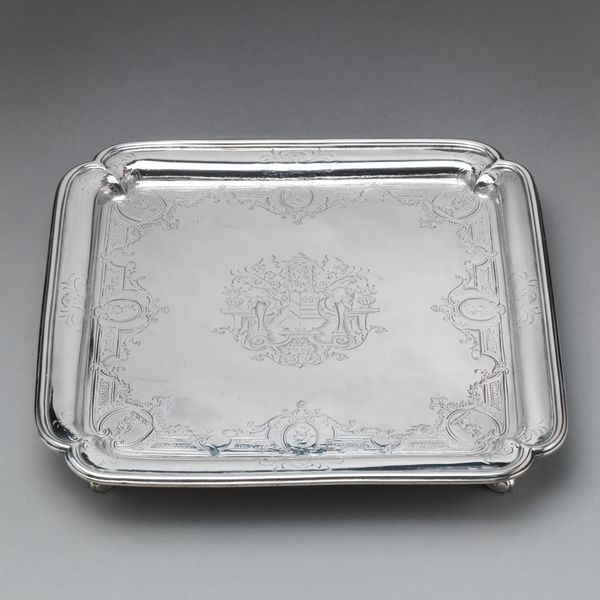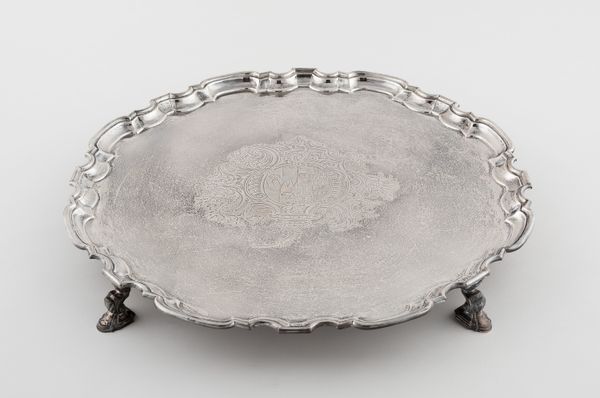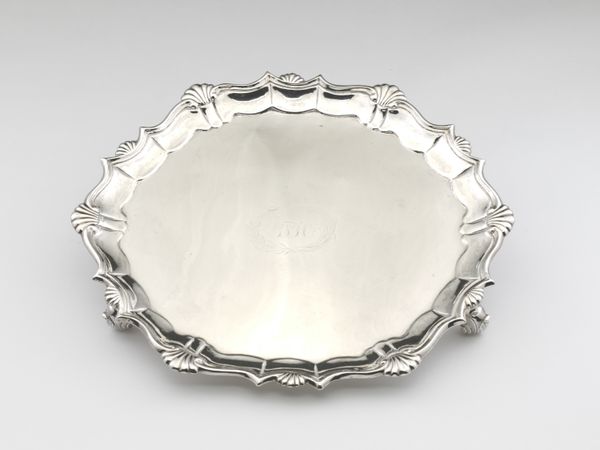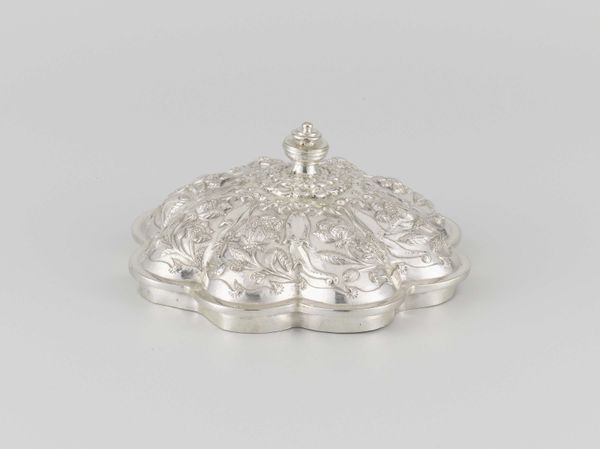
silver, metal
#
silver
#
metal
#
decorative-art
#
rococo
Dimensions: 2.3 × 15.6 × 15.6 cm (7/8 × 6 1/8 × 6 1/8 in.)
Copyright: Public Domain
Editor: Here we have "Waiter," created by Isaac Liger sometime between 1723 and 1724. It's a petite, ornate tray made of silver. The delicate floral patterns around the edge strike me as particularly charming. What story does this object tell you? Curator: Looking at this piece through a historical lens, it speaks volumes about social class and power. This isn’t merely a serving tray; it's a declaration of wealth. How do you imagine an object like this being used in its time? Editor: Perhaps for serving something luxurious like chocolates or coffee during a formal gathering? It feels too precious for everyday use. Curator: Exactly. The Rococo style, with its emphasis on elaborate ornamentation and asymmetry, served to visually reinforce the elite status of its owners. Objects like this, commissioned and displayed, solidified the cultural and social hierarchy of the time. What’s the relationship between art and power as displayed by this tray? Editor: It's fascinating how an everyday object like this can be used to subtly signal someone's position in society, almost like a badge of honor. I hadn't considered the overt display of power like that. Curator: The Art Institute acquired it – what power dynamic does the choice of who possesses it now, as a valued object, represent? Think about its journey from a private collection in the 18th century to a public museum today. Editor: Right! It changes the audience and shifts the control of meaning – it becomes an educational tool that symbolizes an era and power dynamic. This silver tray suddenly feels much more loaded. Thanks, that gives me something new to think about.
Comments
No comments
Be the first to comment and join the conversation on the ultimate creative platform.

